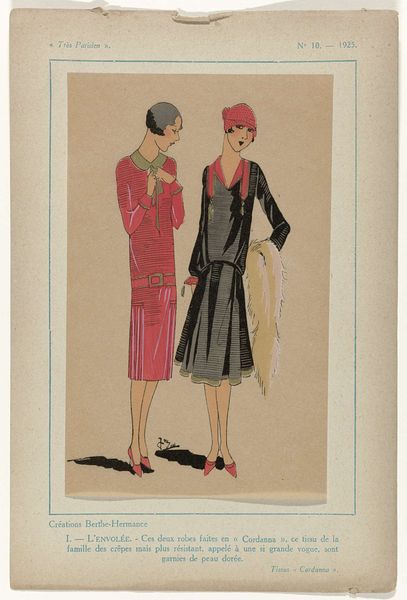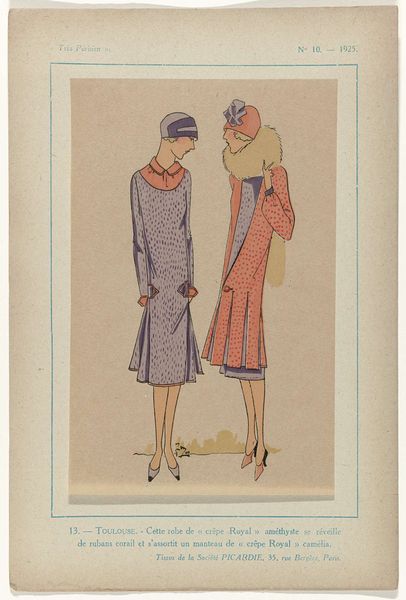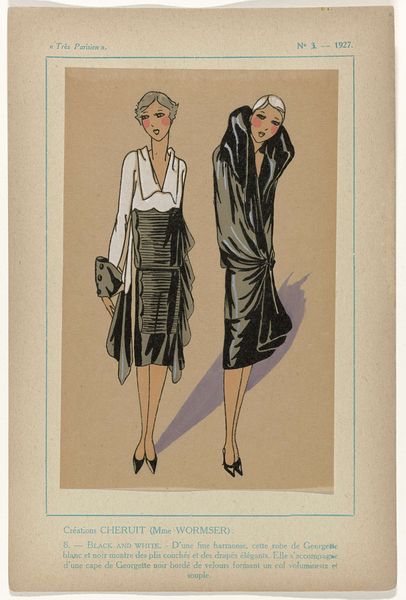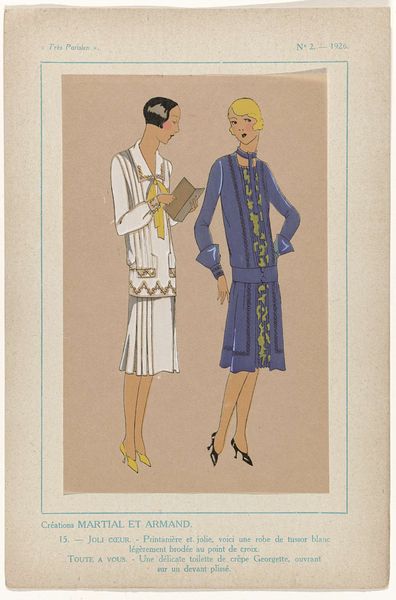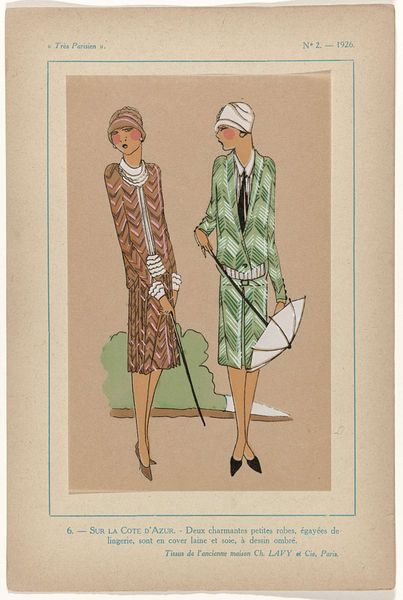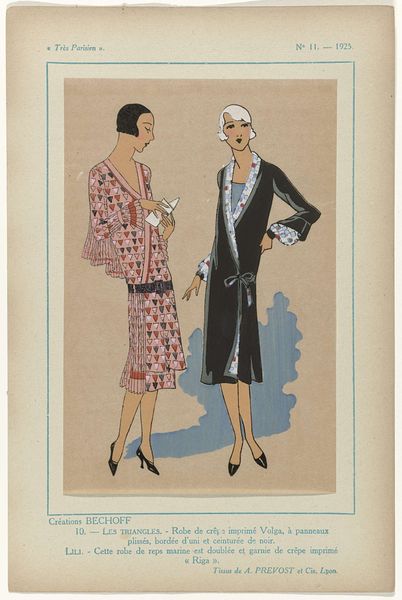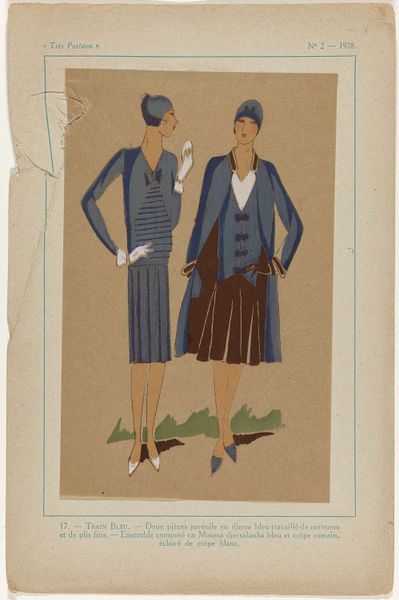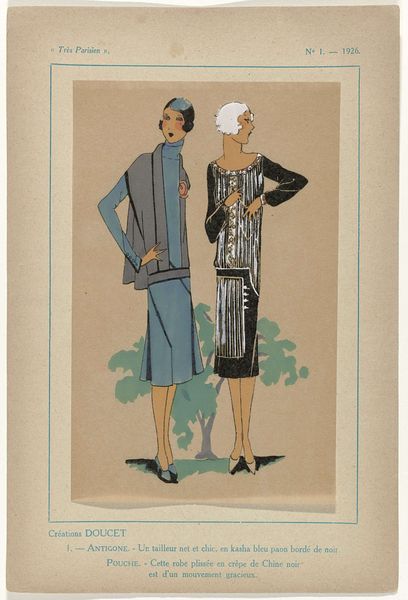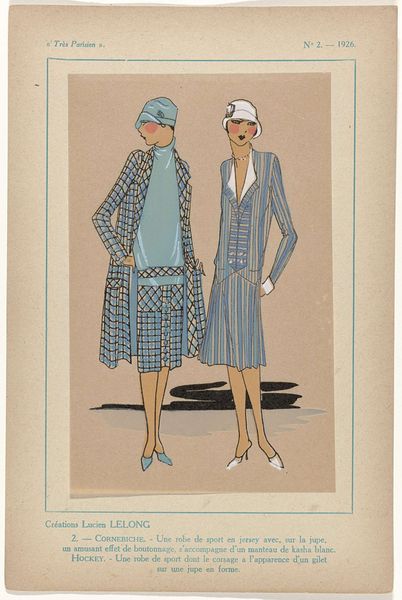
Très Parisien, 1927 No. 3, Pl. 4: Créations JENNY - POMMIERS ET FLEURS 1927
0:00
0:00
gpjoumard
Rijksmuseum
gouache, watercolor
#
portrait
#
art-deco
#
gouache
#
figuration
#
watercolor
#
watercolour illustration
#
watercolor
Dimensions: height 195 mm, width 120 mm, mm
Copyright: Rijks Museum: Open Domain
Curator: Here we have G-P. Joumard's "Très Parisien, 1927 No. 3, Pl. 4: Créations JENNY - POMMIERS ET FLEURS," created in 1927. This striking piece, now residing in the Rijksmuseum, is rendered in gouache and watercolor. Editor: My immediate reaction? Chic austerity! There’s something simultaneously cool and slightly melancholy about these two figures, almost as if they know they're posing but also dreaming of something else entirely. Curator: Absolutely. This illustration exemplifies the Art Deco era’s fascination with modernity, and with representing an elevated feminine ideal that existed within the context of burgeoning commercial visual culture. “Très Parisien” highlights fashion’s evolving role as both an art form and a form of social commentary in the interwar period. These magazines were immensely popular among middle and upper-class women, dictating fashion trends but also shaping aspirations. Editor: You know, I see a bit of Charlie Chaplin in their expressions! They are ever so proper and contained, with a subtle yearning peeking through the stylization. The colors too, muted blues, grays, soft pink – they are elegant, yet feel like whispers of color rather than shouts. Curator: Interesting connection! What's particularly revealing is the emphasis on designer Jenny’s creations. Look at how the plate emphasizes specific textile qualities—the “souple moire marine”—and specific designs—the “flamingo gray pearl.” This illustrates a pivotal moment where designer brands started becoming synonymous with aspiration and taste. Editor: I suppose back then wearing ready-to-wear fashion meant being daring and different than it does today. They’re almost like glamorous rebels. And I like the simplicity of the backdrop, it lets us imagine a cherry blossom or the foam of the ocean to accent the design instead of putting the dresses in front of something specific. It feels optimistic, somehow. Curator: Precisely. What this artwork reflects is how commercial illustration began shaping not only the fashion landscape but also female identity and autonomy. In this single plate, Joumard’s captures a world being re-shaped. Editor: This was much more insightful and intriguing than my snap impressions suggested. It just needed context. Thanks! Curator: My pleasure! It’s rewarding to consider that an image primarily created for commercial ends now enriches the permanent collection of a major art museum.
Comments
No comments
Be the first to comment and join the conversation on the ultimate creative platform.

